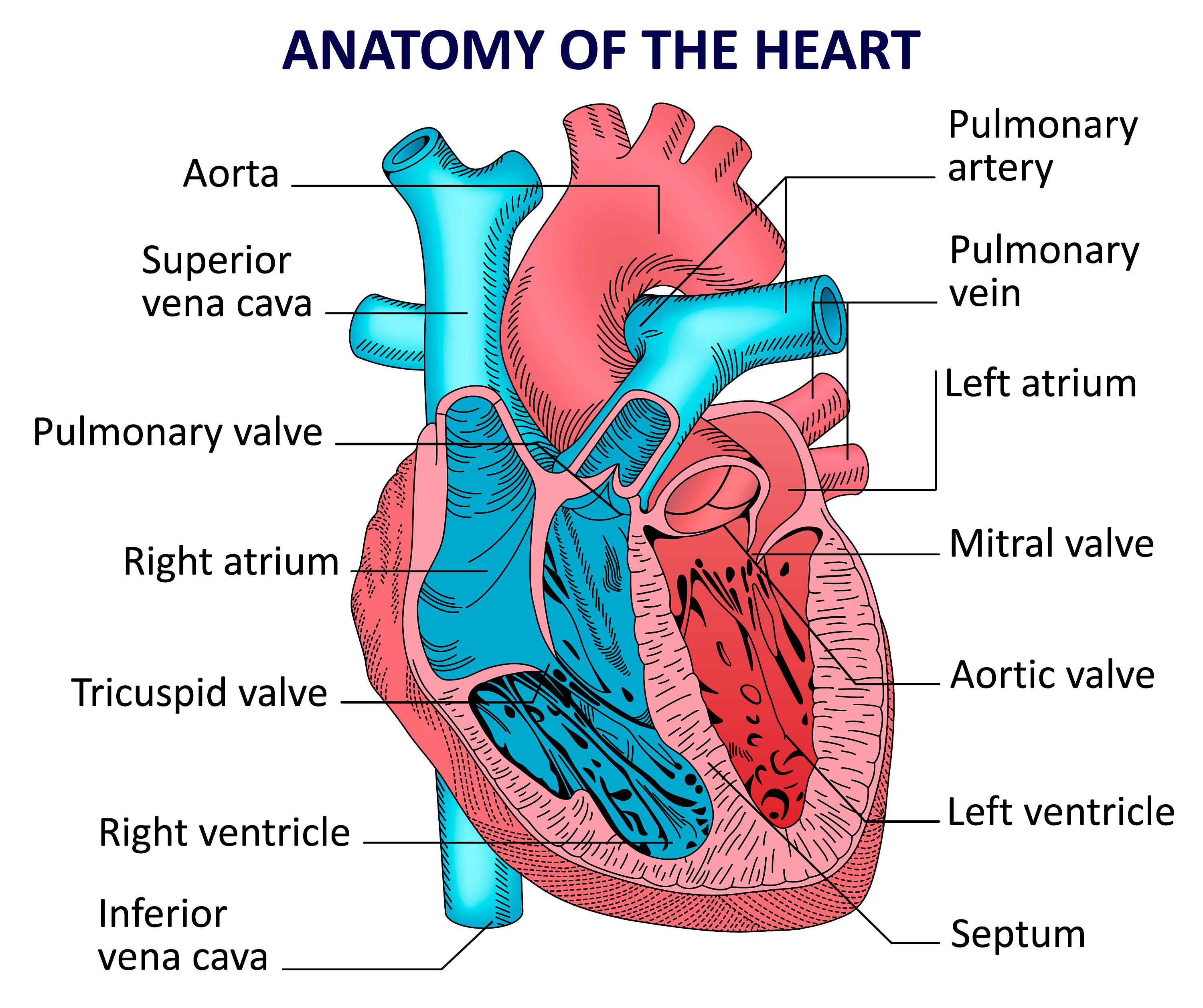
Human heart anatomy. Vector diagram Etsy
The heart, a hollow muscular organ, is located in the center of the chest. The heart has two sides, right and left. The right and left sides of the heart each have an Atrium: Upper chamber that collects blood and pumps it to the lower chamber Ventricle: Lower chamber, which pumps blood out of the heart

Heart Structure A Level Biology YouTube
The heart is a muscular organ that pumps blood throughout the body. It is located in the middle cavity of the chest, between the lungs. In most people, the heart is located on the left side of the chest, beneath the breastbone. The heart is composed of smooth muscle. It has four chambers which contract in a specific order, allowing the human.

Cardiovascular Disease
This video covers the structure and function of the heart, the double circulatory system, the associated blood vessels, pacemaker cells and the coronary arte.
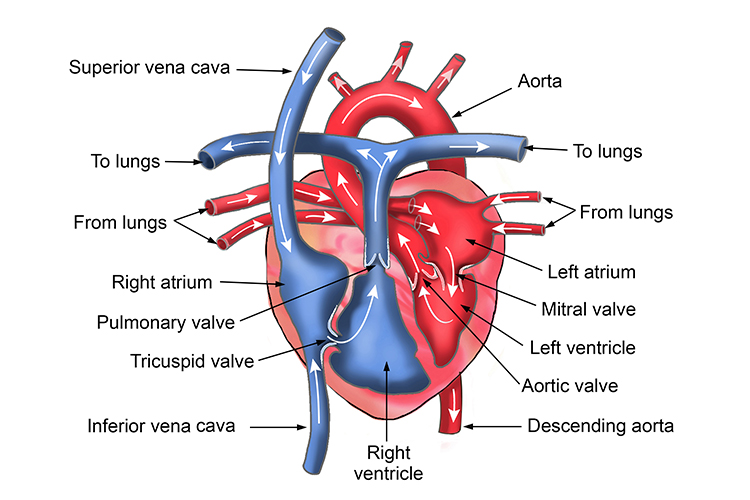
Show a labelled diagram of the heart.
The heart is a hollow muscular organ that lies in the middle of the chest cavity. It is enclosed in the pericardium, which protects the heart and facilitates its pumping action. The heart is divided into four chambers: The two atria (auricles): these are the upper two chambers. They have thin walls which receive blood from veins.

Anatomy Of The Heart koibana.info Heart anatomy, Cardiac anatomy, Human heart anatomy
The heart has four chambers. Blood is pumped between the following four chambers: The Circulatory System - Heart: Structure and Function The right and left sides of the heart are divided by a wall called the septum. This ensures that deoxygenated and oxygenated blood don't mix.
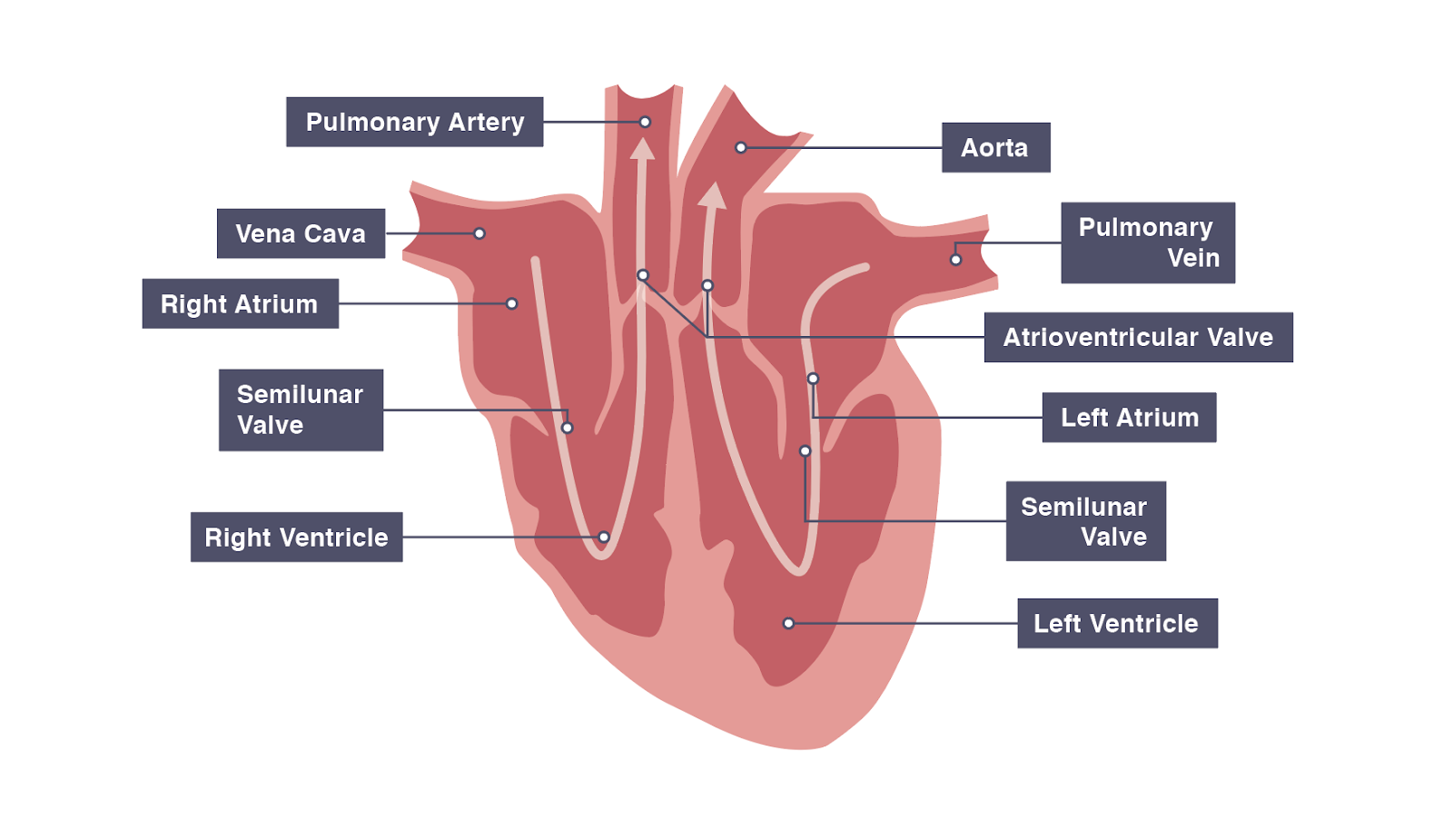
IGCSE Biology 2017 2.65 Describe the Structure of the Heart and How it Functions
o Look at the right-hand diagram. Cut carefully upwards into the left atrium along the line shown in the diagram. p Measure and record the thickness of the walls of the atrium and the ventricle. q Examine the right side of the heart in a similar way. r Look at the areas where an atrium joins a ventricle. Examine the structures there.
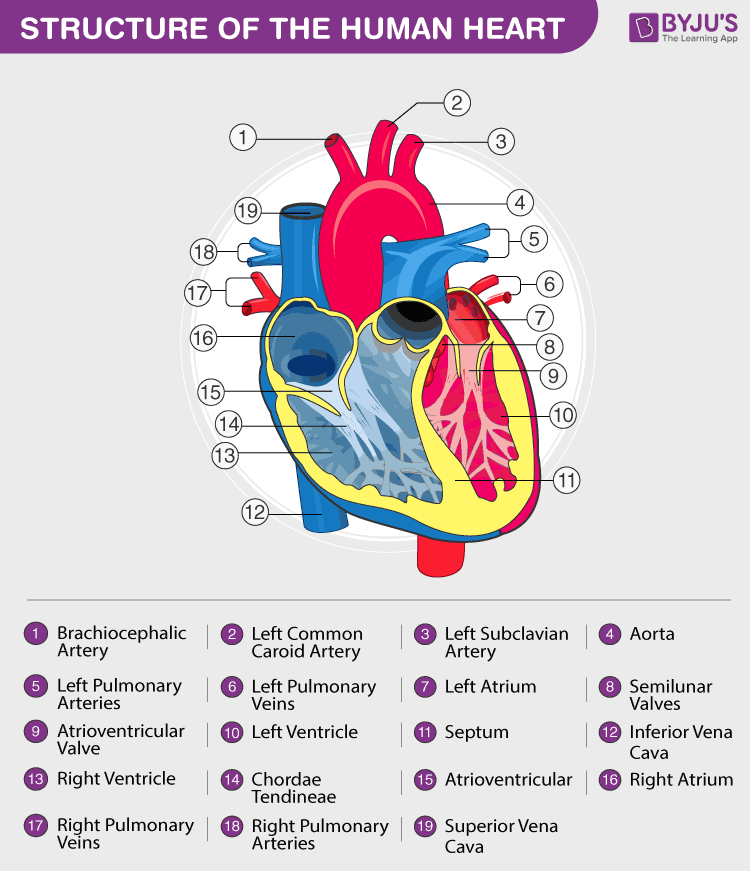
Heart Diagram with Labels and Detailed Explanation
. The main parts of the heart, seen in cross-section from the front The blood on the right side of the heart is deoxygenated. It has been around the body and supplied the cells with oxygen.
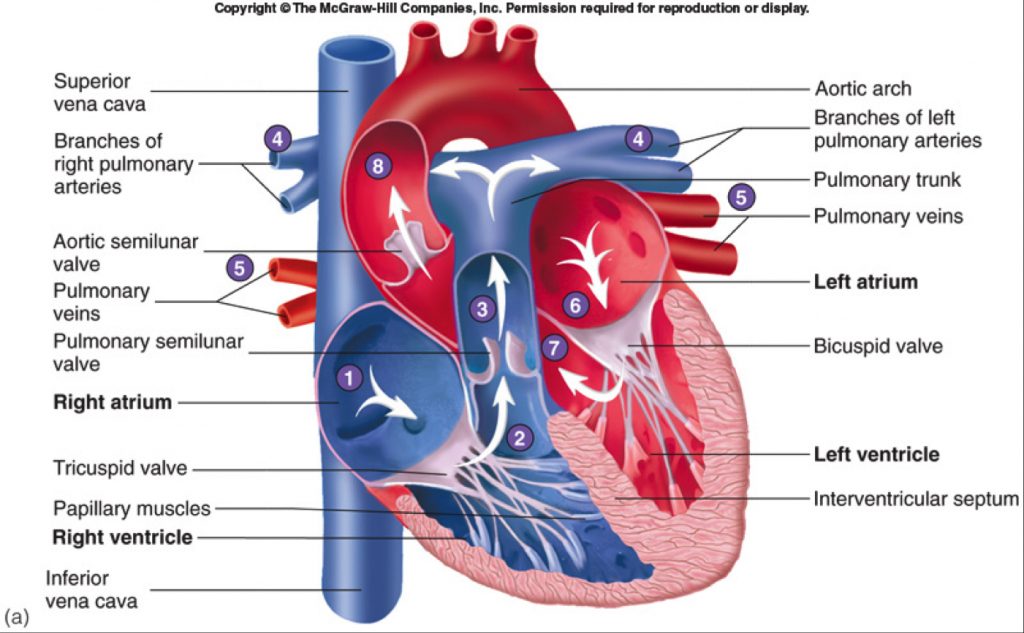
Human HeartGross structure and Anatomy Online Biology Notes
Don't forget to LABEL the parts of the heart on the diagram! 1. Compare the location of the tricuspid and bicuspid. 2. Compare the direction of blood flow in the pulmonary artery to the pulmonary vein. 3. Mitral regurgitation is a heart condition that occurs when the mitral valve does not close fully. Based on your knowledge of the heart.

IGCSE Biology Revision Part 7 The Structure & Functioning Of The Heart YouTube
The human circulatory system consists of several circuits: The pulmonary circuit provides blood flow between the heart and lungs. The systemic circuit allows blood to flow to and from the rest of the body. The coronary circuit strictly provides blood to the heart (not pictured in the figure below). Image credit: Blood flow from the heart by.

External Structures Of The Human Heart
The heart is the organ that helps supply blood and oxygen to all parts of the body. It is divided by a partition (or septum) into two halves. The halves are, in turn, divided into four chambers. The heart is situated within the chest cavity and surrounded by a fluid-filled sac called the pericardium. This amazing muscle produces electrical.
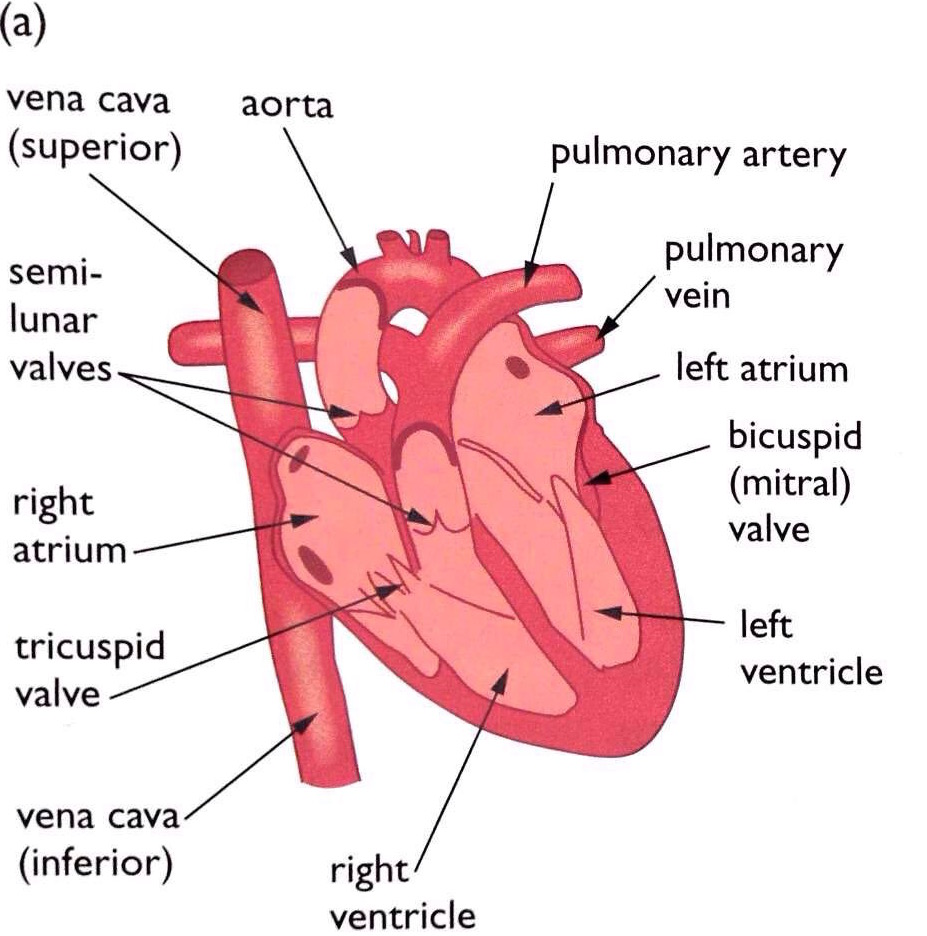
iGCSE Biology Gross Structure Of The Heart BioChem Tuition
The atria (plural of atrium) are where the blood collects when it enters the heart. The ventricles pump the blood out of the heart to the lungs or around the body. The septum separates the.
IGCSE Biology Notes 2.63 Describe the Structure of the Heart and How it Functions
The heart is labelled as if it was in the chest so what is your left on a diagram is actually the right-hand side (and vice versa) The right side of the heart receives deoxygenated blood from the body and pumps it to the lungs where oxygen diffuses in from the alveoli and carbon dioxide diffuses out

Diagram of the heart Heart diagram, Medical anatomy, Medical school studying
Diagram of Heart The human heart is the most crucial organ of the human body. It pumps blood from the heart to different parts of the body and back to the heart. The most common heart attack symptoms or warning signs are chest pain, breathlessness, nausea, sweating etc.
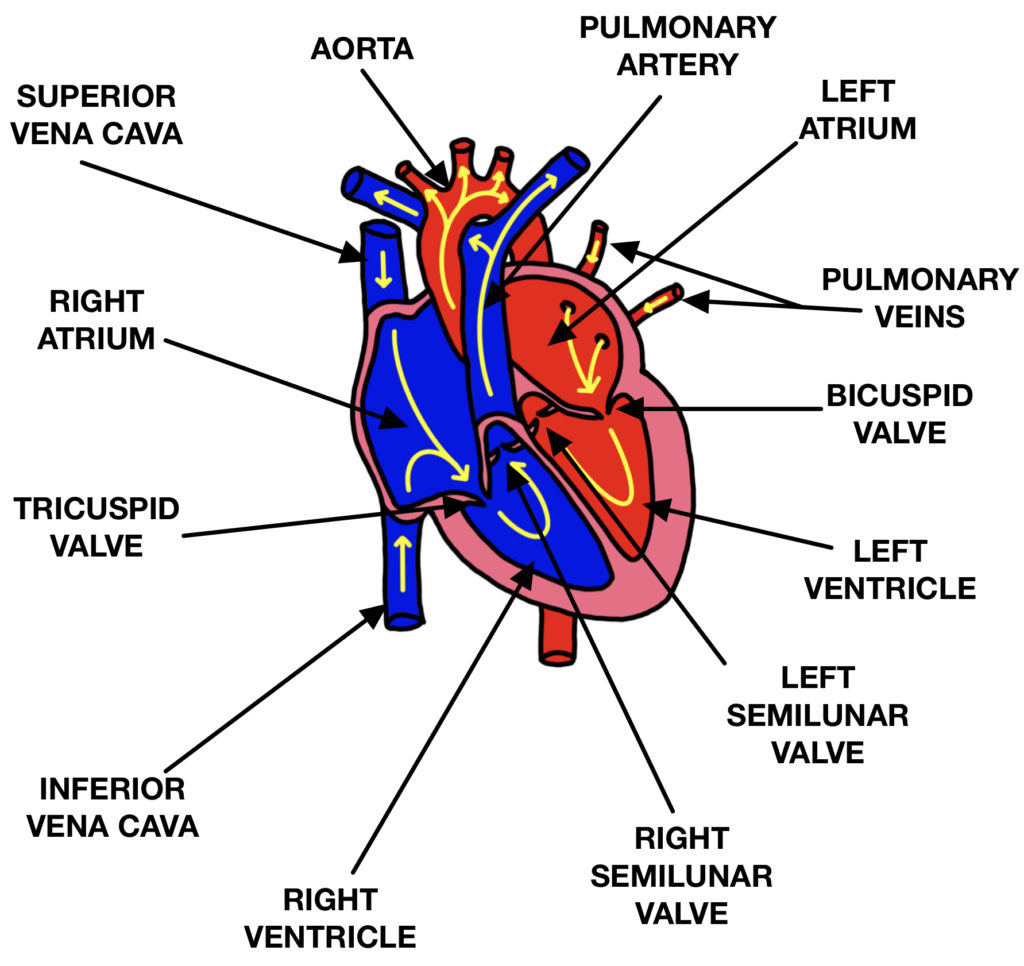
Structure of the Heart The Science and Maths Zone
The heart is a unidirectional pump. Valves are present to prevent the backflow of blood. The right side pumps deoxygenated blood (low in oxygen and high in carbon dioxide) to the lungs. The left.

Cardiac cycle and the Human Heart Grade 9 Understanding for IGCSE Biology 2.65 2.66 PMG Biology
The heart is a hollow, muscular organ located in the chest cavity It is protected in the chest cavity by the pericardium, a tough and fibrous sac The human heart has four chambers and is separated into two halves by the septum The heart is divided into four chambers. The two top chambers are atria and the bottom two chambers are ventricles
1 Diagram of the human heart. The image depicts the different cavities... Download Scientific
The heart is the control for the circulatory system. It is a muscle that pumps blood around the body. The heart consists of two muscular pumps that lay next to each other. The right side pumps deoxygenated blood to the lungs, whereas the left side pumps oxygenated blood to the whole body. There are four chambers in total.